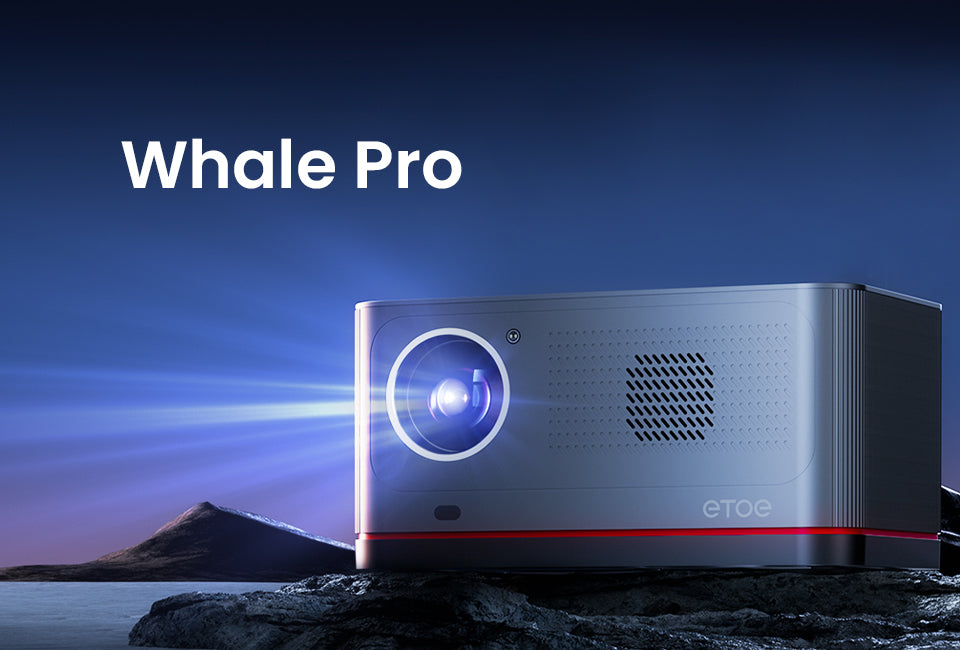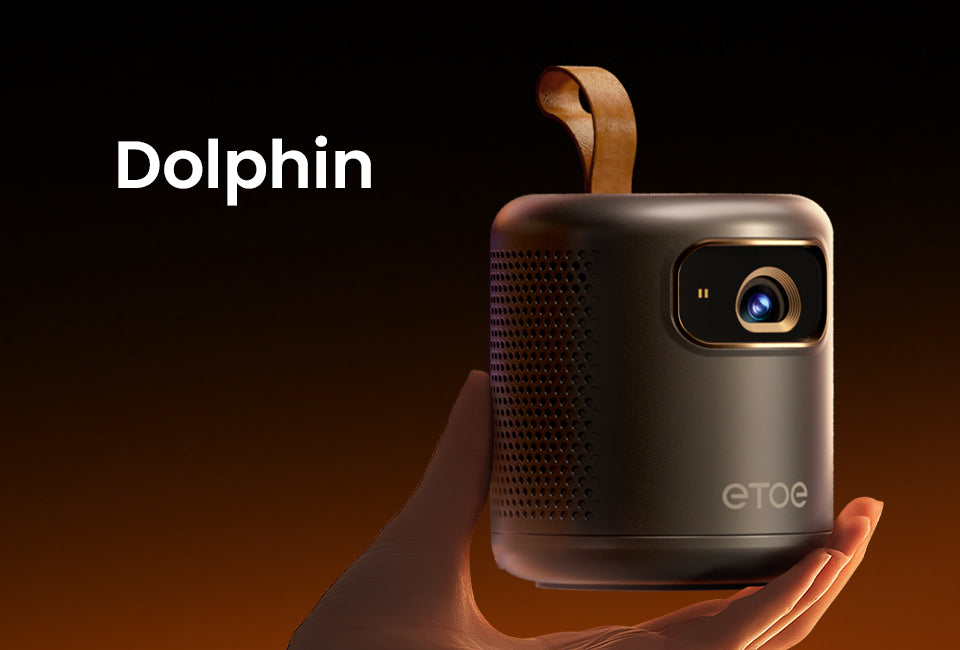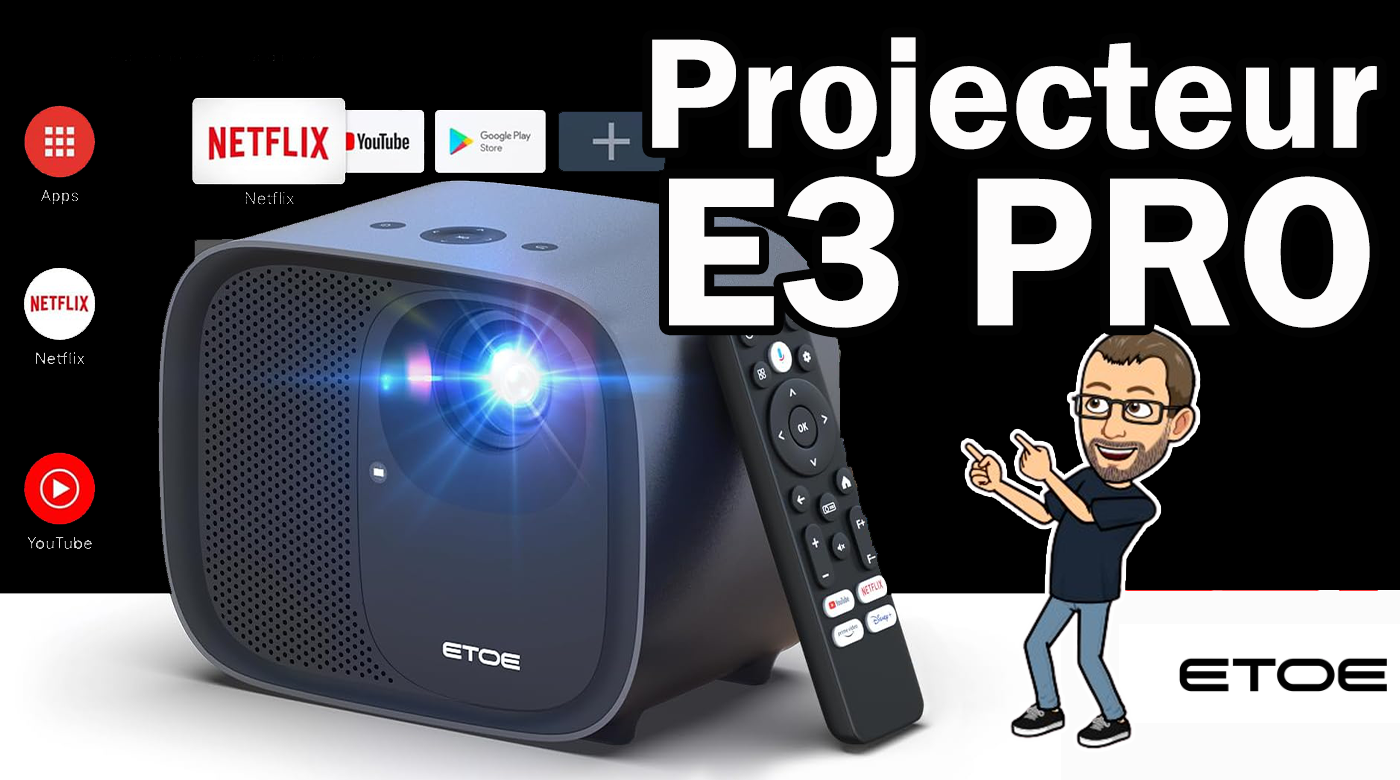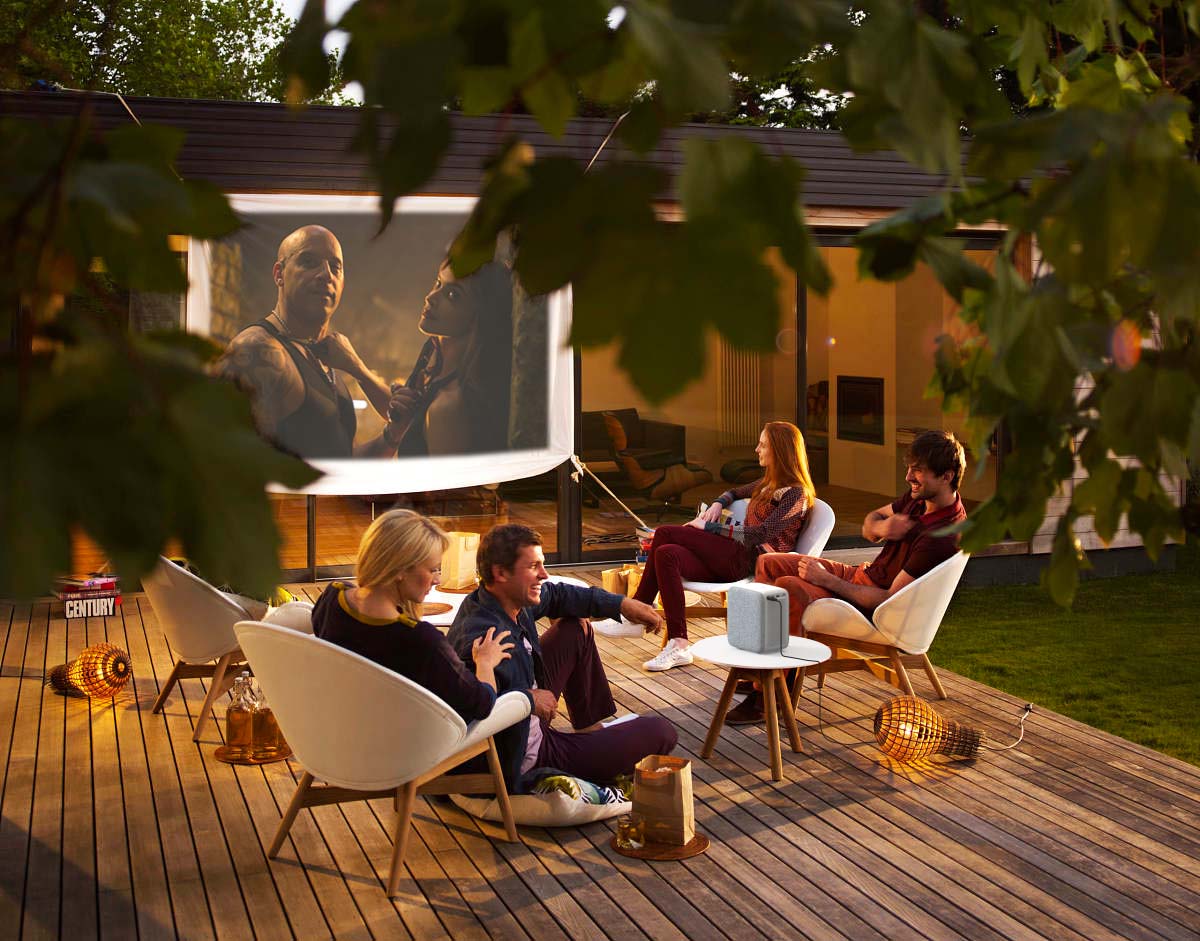Introducción: Para crear la experiencia de cine en casa perfecta es necesario tener en cuenta cuidadosamente dos factores clave: la distancia de proyección y el tamaño de la pantalla. En esta publicación del blog, analizaremos en profundidad la importancia de comprender sus necesidades específicas, seleccionar el proyector adecuado y calcular el tamaño de pantalla ideal. También exploraremos el concepto de corrección trapezoidal y su impacto en la calidad de la imagen.
Distancia de proyección y selección del tamaño de la pantalla: para comenzar a disfrutar de su cine en casa, es fundamental que empiece por comprender la distancia de proyección prevista y el espacio disponible en su hogar. A diferencia de los televisores tradicionales, los proyectores ofrecen una experiencia cinematográfica envolvente, y se recomienda un tamaño de pantalla de entre 100 y 120 pulgadas para una visualización óptima. La flexibilidad de los proyectores permite utilizarlos en diversos entornos, lo que los convierte en una opción versátil.

Cálculo de la distancia de proyección: Determinar la distancia de proyección ideal es clave para lograr la mejor experiencia visual posible. Se puede calcular con una fórmula sencilla: distancia de proyección = ancho de la pantalla x relación de aspecto. Por ejemplo, con una pantalla de 100 pulgadas y una relación de aspecto de 1,22:1, la distancia de proyección sería de 2,7 metros. Puede usar la herramienta de fórmulas que se proporciona en este documento. Documento de Hojas de cálculo de Google para cálculos rápidos.
Corrección trapezoidal: en algunos casos, puede resultar complicado colocar el proyector directamente frente a la pantalla para obtener una imagen perfectamente centrada. Aquí es donde entra en juego la corrección trapezoidal. La mayoría de los proyectores ETOE ofrecen corrección trapezoidal de 4 direcciones y 4 puntos, y ahora está disponible la tecnología láser avanzada, como la corrección automática Tof, como se ve en el modelo E3 Pro.
Ventajas de la corrección trapezoidal:
- La corrección trapezoidal le permite proyectar una imagen clara incluso cuando el proyector no está perfectamente centrado.
- Es una solución práctica para una amplia gama de entornos de visualización.
Desventajas de la corrección trapezoidal:
- La corrección trapezoidal se logra mediante cálculos que pueden afectar la claridad de la imagen.
- Para lograr una claridad superior sin sacrificar la calidad de la imagen, algunos proyectores utilizan el desplazamiento de la lente para ajustar la imagen, pero estos modelos tienden a ser más caros (a partir de $500) y pueden carecer de funciones como Wi-Fi, Bluetooth y transmisión de contenido, lo que los hace menos convenientes para fines de entretenimiento.
Conclusión: Seleccionar la distancia de proyección y el tamaño de pantalla adecuados es crucial para disfrutar de una experiencia de cine en casa satisfactoria. Comprender el proceso de cálculo y el papel de la corrección trapezoidal puede ayudarle a tomar decisiones informadas al configurar su cine en casa. Tanto si opta por un proyector tradicional como por uno con funciones avanzadas como la corrección automática de Tof, el objetivo es crear un espacio cinematográfico que se adapte a sus necesidades y preferencias específicas. Así que empiece a planificar la configuración de su cine en casa y prepárese para disfrutar de noches de cine y entretenimiento envolventes como nunca antes.






Dejar un comentario
Este sitio está protegido por hCaptcha y se aplican la Política de privacidad de hCaptcha y los Términos del servicio.